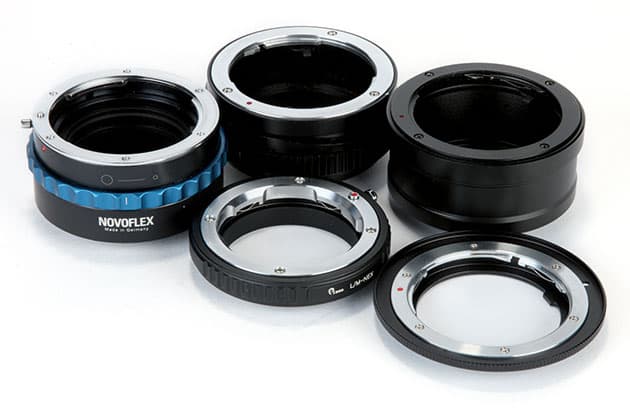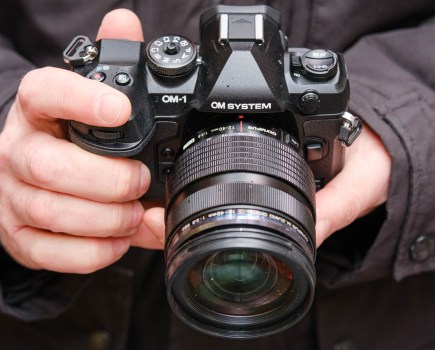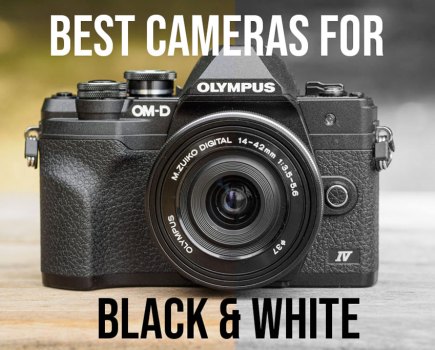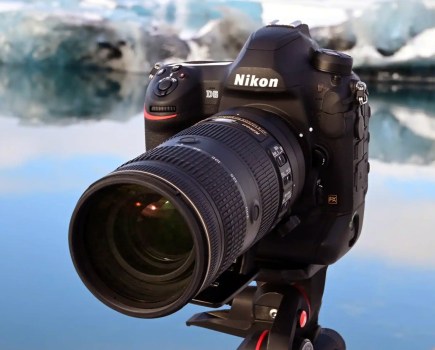Once upon a time, when you bought an SLR, you stuck with lenses made for the same mount. However, with the advent of live view and mirrorless cameras, it has become much more practical to shoot with alternative lenses, and a huge range of adapters is now available to connect almost any imaginable combination of lens and body together.

In essence, lens adapters are usually little more than metal tubes with a mount at one end to fit onto your camera body, and another to accept lenses of a different type at the other. They work because every camera system has a specific ‘register distance’ between the film or sensor and the body mount. For SLRs, this is usually between 43mm and 47mm, whereas for mirrorless cameras it’s 17mm to 20mm. With an adapter that bridges the distances between the two mounts, the lens is placed in the correct position to focus properly.
Because most adapters are no more than this, they do have their limitations. With no electrical controls, neither autofocus nor optical image stabilisation will be available. Aperture setting will be unavailable with lenses that use electric diaphragm control, and don’t be tempted by adapters that claim to get around this by using built-in diaphragms, as they simply don’t work properly.
For lenses that use mechanical diaphragm control but don’t have aperture rings (Nikon G-type for example) it’s possible to buy adapters with their own control rings. Unfortunately though there’s no direct way of knowing what aperture you’re actually using.
Because of this, adapters tend to work best with manual focus lenses that have aperture rings. Generally, they work in stop-down mode so you preview the shot at the aperture set on the lens. The camera will adapt its live view display to maintain the same brightness as you stop the lens down, which means you can shoot at small apertures, and still get a clear and bright viewing image.
Which adapter should I buy?
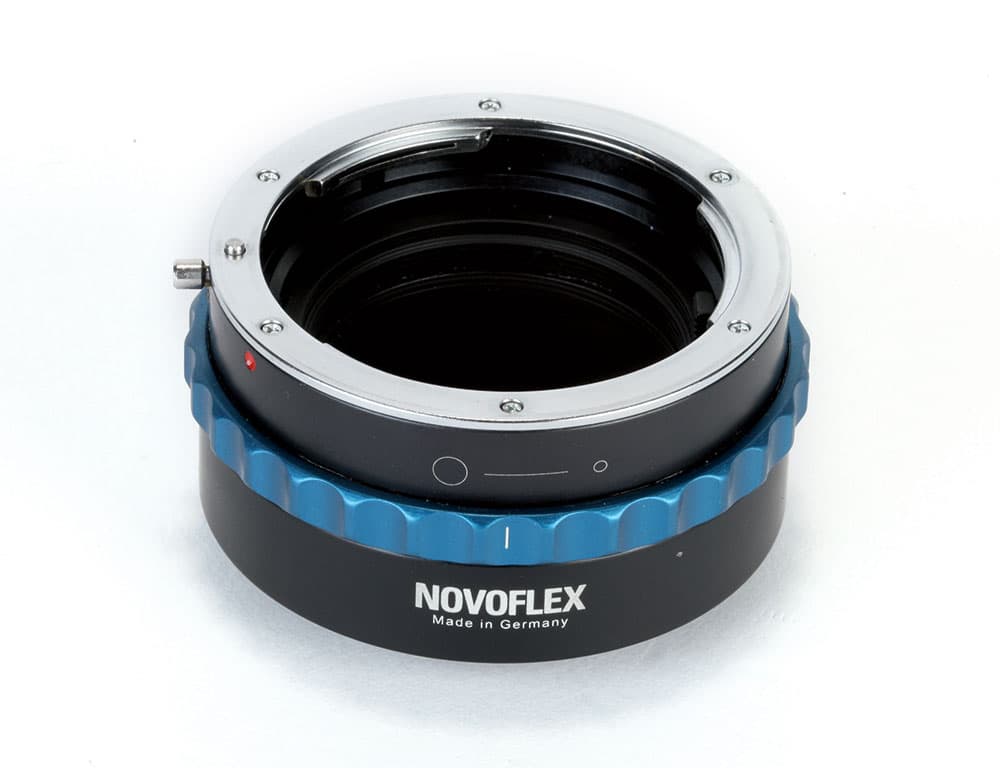
Novoflex lens adapters are top quality
Lens adapters come at a wide range of prices. Top-quality models from the likes of Novoflex are precisely the right length for lenses to focus correctly across their designed range, and have finely machined mounts that are perfectly parallel to each other. In contrast, cheap knock-offs can be roughly made and at worst, lenses may barely fit at all. If you want to shoot seriously with high-quality manual focus primes, it’s worth investing in a premium adapter that will withstand lots of lens changes without missing a beat. But if you just want to experiment, then cheaper options from the likes of SRB Griturn make more sense. I’ve had good experiences with Kipon, Pixco and K&F Concept-branded models, too.
Click here to buy the Novoflex
Adapters for SLRs
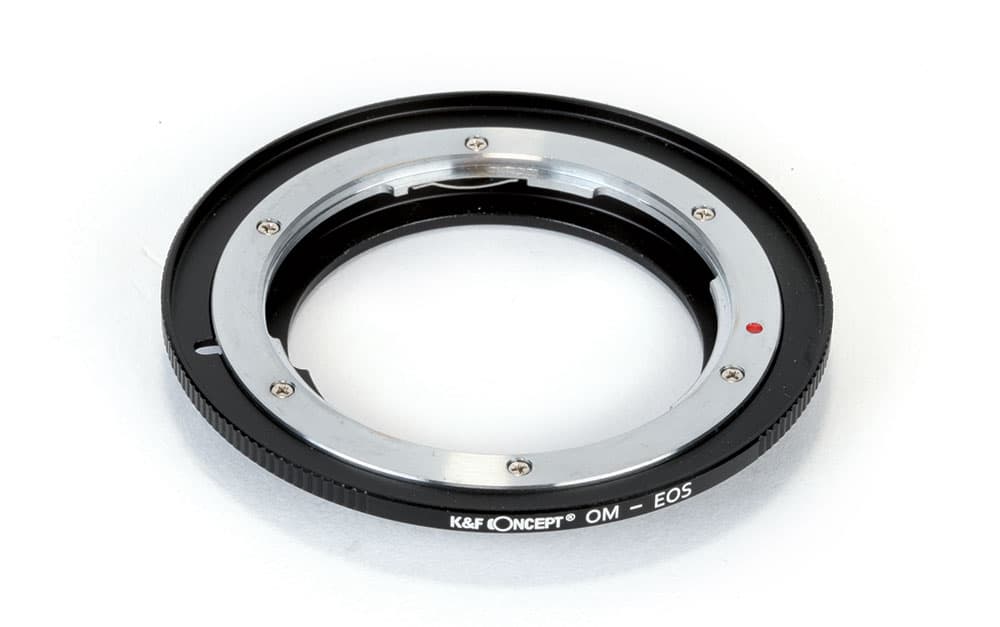
Olympus OM lens to Canon EOS adapter
Some mount adapters are available for SLRs, but they’ve never been very popular. The small differences in register distances mean that only a few are practical to make, and even these don’t offer automatic aperture operation. Instead, you have to focus and compose with the lens wide open, then manually stop down for shooting. However, they’re usable in live view mode or with the camera on a tripod.
Click here to by the OM to EOS Adapter from K&F Concept
Lens mount adapters – Speed boosters
Speed boosters are special adapters that contain optics to reduce the lens’s focal length, normally by a factor of 0.7x. In the process, they increase the lens’s effective maximum aperture by a stop, so a 50mm f/1.4 becomes a 35mm f/1.0 when attached. In effect, they are the opposite of teleconverters.
In practical terms, a 0.7x speed booster makes full-frame lenses behave much the same on APS-C cameras as they do on full frame, with a similar angle of view and control over depth of field. There’s some penalty in optical quality, but it’s surprisingly small.
Manufacturers’ system adapters

Canon’s EF to EOS-M mount adapter
Most camera manufacturers make adapters to use with their SLR lenses on their own mirrorless cameras. While these tend to be expensive, they include electronic and mechanical connections so that aperture setting, autofocus and image stabilisation systems work correctly. For example, Canon’s Mount Adapter EF-EOS M allows SLR lenses to be used on its EOS M-series bodies, which works very well with its latest generation of cameras (EOS M5 and M6). Uniquely, Sony’s LA-EA4 adapter, for using A-mount lenses on E-mount cameras, has a complete built-in phase detection autofocus system.
Click here to buy the Canon EF-EOS M adapter
Smart adapters

Sigma’s MC-11 adapter allows Canon EF-mount lenses to be used on Sony mirrorless bodies
Pioneered by US company Metabones, so-called Smart Adapters allow electronic lenses to be controlled by Sony E-mount or Micro Four Thirds bodies. Aperture control, image stabilisation and autofocus are all available, but the latter can be relatively slow and hesitant, and sometimes not work at all.
We’ve been especially impressed by the Sigma MC-11 adapter for using Canon EF-mount lenses on Sony E-mount cameras. Officially, this is only fully compatible with Sigma’s own Global Vision lenses, but I’ve found it to work with practically any lens that fits. It’s a great option for Canon users wanting to try Sony’s full-frame mirrorless models.
Click here to watch MC-11 adapter from Sigma
Techart Pro AF adapter

The Techart Pro adapter allows autofocus with any lens on certain Sony mirrorless cameras
Another device I like a lot is the Techart Pro Leica M – Sony E AF adapter. Designed to mount Leica M-mount lenses onto Sony E-mount bodies, this includes, uniquely, an autofocus mechanism that allows the lens to be moved back and forth by 4.5mm. However, almost any manual-focus SLR lens can be used via a second mount adapter. The catch is that the adapter relies on phase detection, meaning it only works on a limited range of bodies: namely the Alpha 6500, Alpha 7 II, Alpha 7R II, or Alpha 9. Its focusing travel is only fully sufficient for lenses of 50mm or shorter, too. With longer optics you will have to set an approximate focus first.
Click here to read our review of The Techart Pro Leica M – Sony E
Tilt and Shift adapters
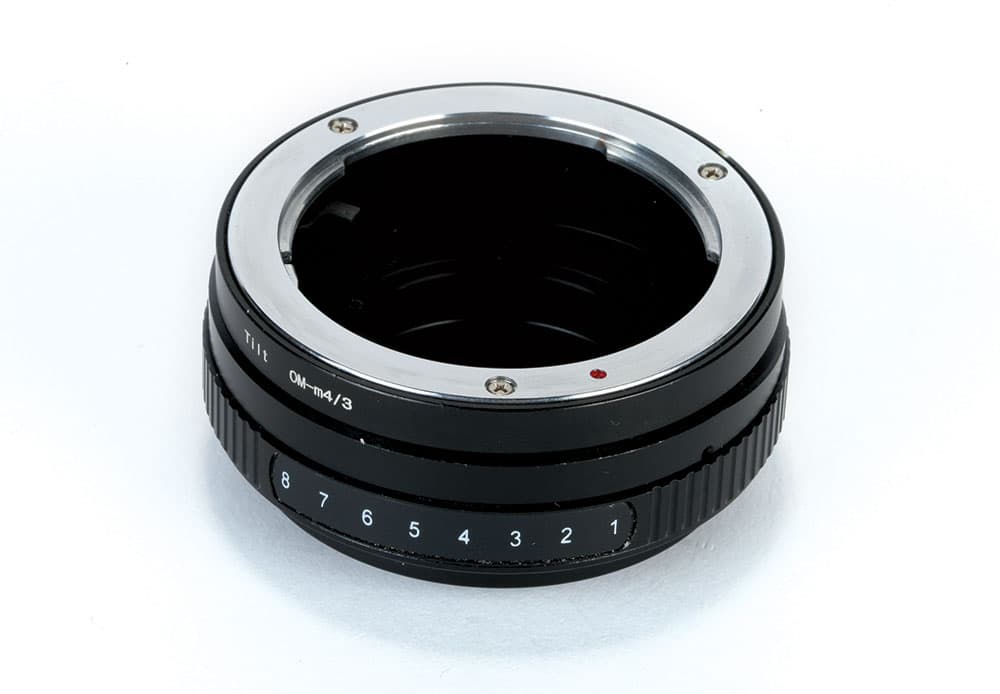
Tilt and shift adapters will give you more creative control over your images
These specialist adapters enable lens movements for creative photographic effect. Most offer only one type, but the most expensive combine tilt and shift together. For them to work effectively, the lens’s image circle has to be larger than the sensor, but this is no problem when using full-frame lenses on APS-C or Micro Four Thirds camera bodies.
Tilt adapters allow the lens to be angled relative to the sensor. This allows creative control of depth of field, either to increase it without stopping down the aperture as far as would otherwise be necessary, or to indulge in ‘fake miniature’, shallow depth-of-field effects. Doing this optically gives much more creative control compared with in-camera ‘miniature’ modes: you can adjust the focus region exactly where you want, at any angle across the frame. Meanwhile, shift adapters allow you to move the lens up and down, or left and right relative to the sensor. This enables optical correction of keystone distortion or converging verticals, which can often be seen in wideangle shots.

